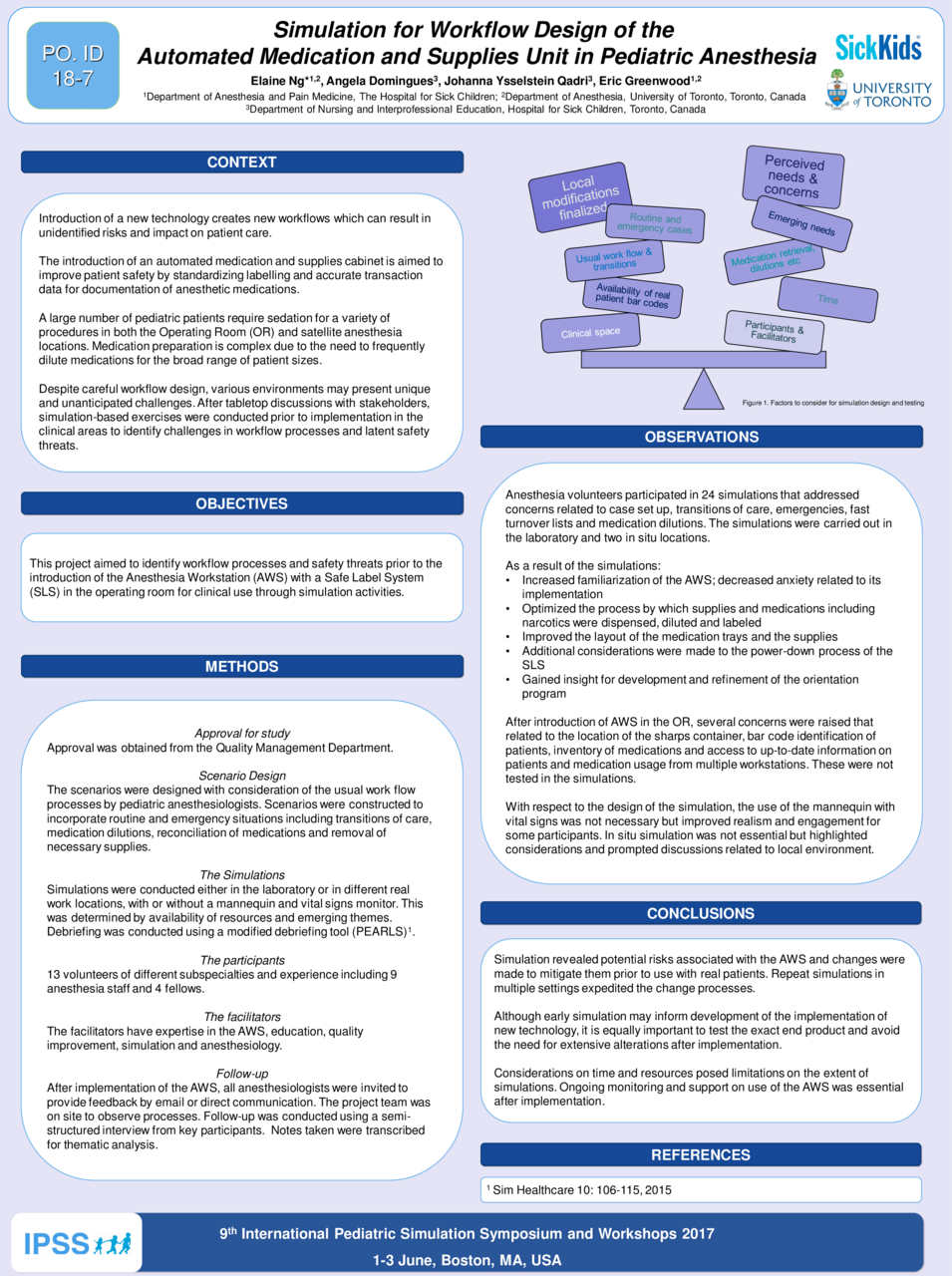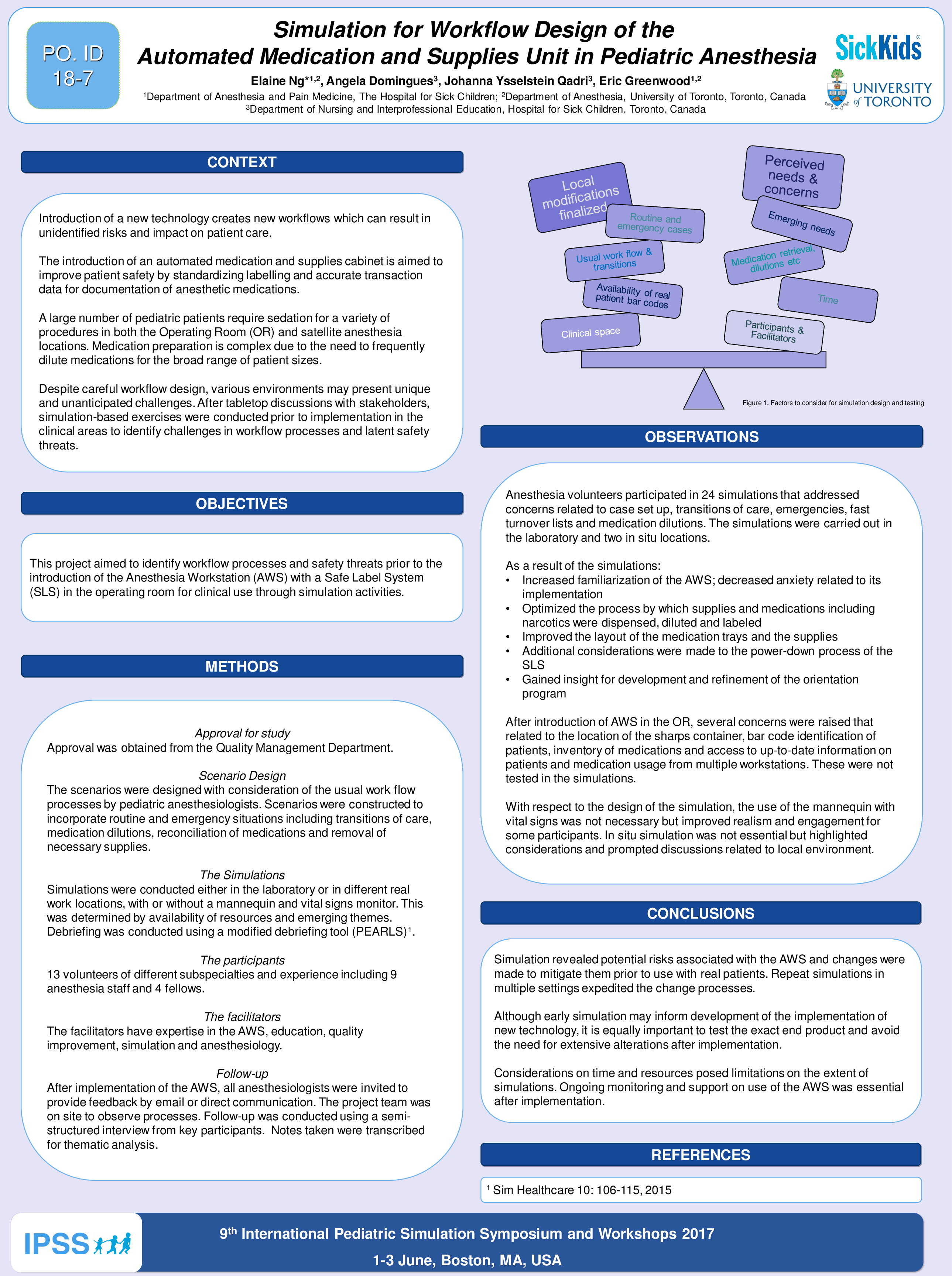Abstract
Context
Introduction of a new technology in the operating room (OR) creates new workflows which can result in unidentified risks and impact on patient care. Despite careful workflow design, different environments may present unique and unanticipated challenges. This project aimed to use simulation to identify workflow processes and safety threats prior to the introduction of the Omnicell Anesthesia Workstations with the Codonics Safe Label System (AWS) in the OR for clinical use.
Description
Approval for study was obtained from Quality Management Department. The scenarios were designed with consideration of the usual work flow processes used by pediatric anesthesiologists. Scenarios were constructed to incorporate routine and emergency situations including transitions of care, medication dilutions, reconciliation of medications and removal of necessary supplies. Simulations were conducted either in the laboratory or in different real work locations, with or without a mannequin and vital signs monitor. This was determined by availability of resources and emerging themes. Anesthesiologists of different levels and subspecialties were involved after an orientation to AWS. Debriefing was conducted with a standardized debriefing tool. After implementation of the AWS, all anesthesiologists were invited to provide feedback by email or direct communication. The project team was on site to observe processes. Follow-up was conducted using a semi-structured interview from key participants. Notes taken were transcribed for thematic analysis.
Observations
The simulations identified the optimal process by which supplies and medications including narcotics were dispensed, diluted and labeled. The layout of the medication trays and the supplies were improved. Additional considerations were made to the power-down process. The information gained was utilized to develop an orientation program that incorporated these refinements. After introduction of AWS in the OR only two workflow concerns were raised that related to the location of the sharps container and bar code identification of patients.
With respect to the design of the simulation, the use of the mannequin with vital signs were not necessary but improved realism and engagement for some participants. In situ simulation was not essential but highlighted considerations related to local environment.
Discussion
Simulation revealed potential risks associated with the AWS and changes were made to mitigate them prior to use with real patients. The orientation program was optimized based on findings from the simulation. Participants gained familiarity with the hands-on experience. Other end-users had increased confidence as simulation testing had taken place. Repeat simulations in multiple settings expedited the change processes.
While early simulation may inform development of the technology, it is equally important to test the exact end product and avoid the need for extensive alterations after implementation.





